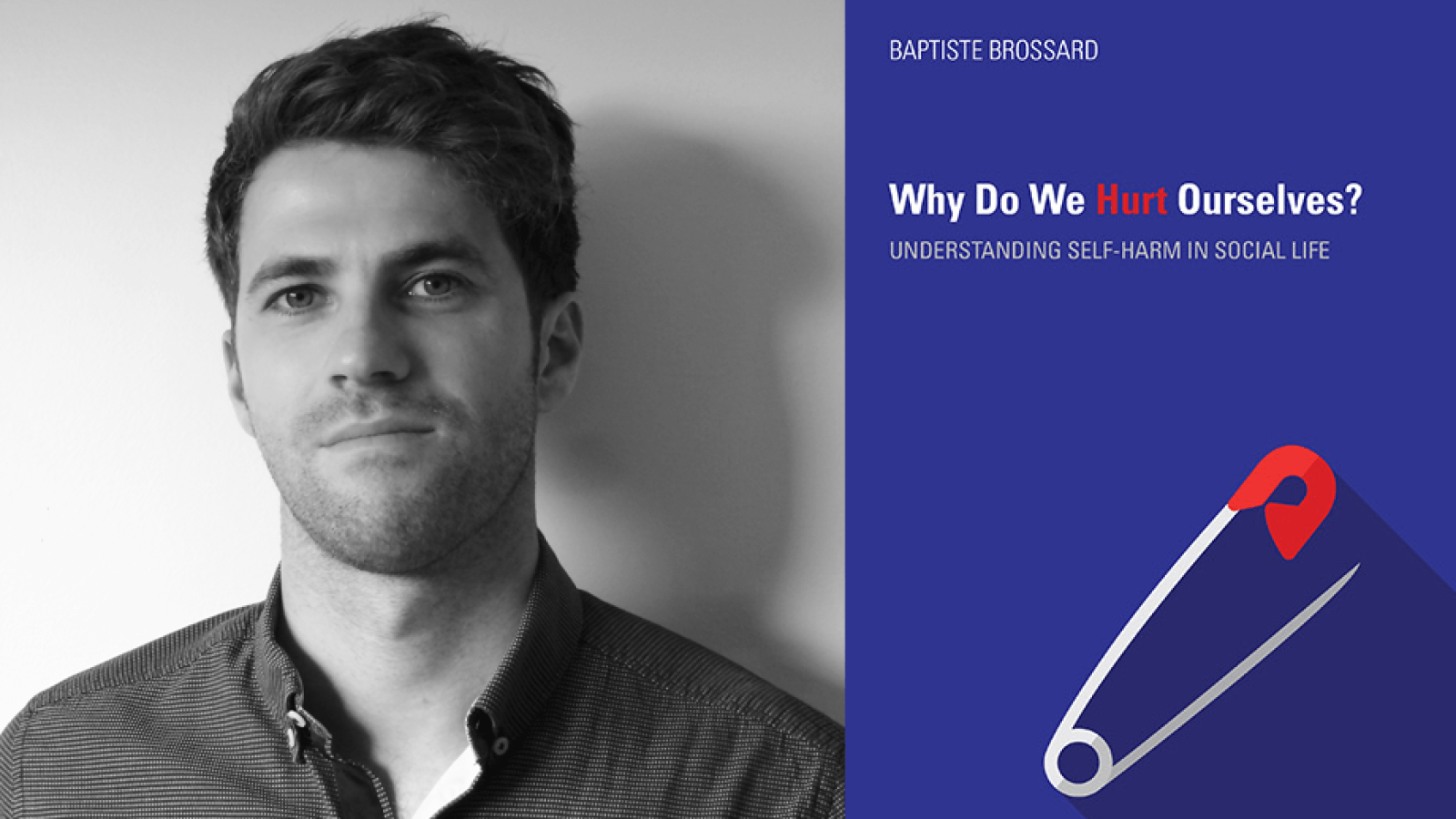ANU sociologist's new book examines social mechanisms of self-harming

Dr Baptiste Brossard's new book on self-harm explains the condition is a way for some people to manage their emotions.
Content warning: Discussions of self-harm and mental health
Almost a quarter of Australian youth have self-harmed at least once in their life, a 2010 survey in the Medical Journal of Australia estimated1.
This behaviour reflects a reaction to social expectations such as family pressures to be successful or gender roles, a book recently published in English, based on a five-year study of the condition, has found.
The findings in Why Do We Hurt Ourselves: Understanding Self-harm in Social Life (Indiana University Press, 2018) resulted from interviews with almost 70 people by Dr Baptiste Brossard of the ANU School of Sociology.
“It’s important to highlight that self-injury is a practice that is a reaction to a general context that someone will experience, and self-injurers are especially facing common problems such as pressure for success and the embodiment of gender,” Dr Brossard says.
“It’s an important idea for people to know we share the same issues, and for scholars as well to know that it’s not only a kind of very specific behaviour ascribed to the area of mental health, it is that, but it’s also something bigger.
“This idea is important for self-injurers themselves and their families because it means that they are not marginal people who are having a minority behaviour. It’s just that they are people experiencing common issues or pressures of social life.”
Dr Brossard interviewed people who were hospitalised in mental health units, while he met others through online forums devoted to self-harm, whose administrators introduced him to members.
“With some of the participants, I did several interviews,” Dr Brossard recalls.
“Some were online by instant messaging, some were face-to-face. It’s a skill we have to have as qualitative sociologists to make people trust us. What I did, which I think helped a lot, was share my own life experience with them, not necessarily about self-injury, but talking about stress of their studies, conflicts you can experience in families. So instead of giving myself the face of a neutral sociologist, I was exchanging like you would with friends.
“That was an important part of gaining trust and respect.”
Most of the participants in Dr Brossard’s study were women, aged on their 20s. Participants in mental health institutions tended to be younger, between 14 and 19.
“People I met online were more from the middle classes to middle upper classes, and it was much more varied in the institutions, where there were more people from the working classes.”
Dr Brossard found people self-harmed as a means to try keeping calm as they deal with different feelings.
“Some are feeling panic attacks, for instance, some are depressed or feeling sadness, some of them have bodily sensations that are disturbing, so it’s possible they have a lot of different emotions, but the common point between all of them is that they use self-injury as a way to control these emotions, and to maintain the order of interactions around them.
“Which means that instead of letting these emotions prevent them from doing things such as going to school, work, or their family… they cut themselves or burn themselves and control these disturbing emotions in order to manage their daily life.”
“Finally, the ultimate goal of self-injury is in a sense preserving the social order. In that sense it’s not deviant, it’s people who conform and try to have an ordinary life.”
Statistics vary depending on surveys, but it is reasonable to think that five percent of the population may self-harm regularly, Dr Brossard says.
“It’s not as uncommon as we think, but it’s very hidden. This is another thing I was interested in during my research. People who self-injury have scars that they try to hide most of the time, they try to remain discreet.”
That contradicts the accounts of psychiatrists and family members, who say people self-harm because it leaves a mark, and thus that they call for help.
“Actually, self-injurers generally try to control that mark,” Dr Brossard says.
“Also, there’s a lot of neighbouring or close practices, because I’m talking about self-injury as the fact of harming oneself regularly.
“But what about some people who have an anger outburst and hit a wall from time to time, or clutch their keys so hard it leaves a mark. My point is that self-harm is a continuum.”
Dr Brossard has two main recommendations for people who know someone who’s harming themselves. The first is that stopping self-injury should not be a priority.
“Why, because self-injury is a way of managing one’s emotion,” he says.
“If you stop self-injuring and you don’t know how to manage these emotions, you may try something else. The other possibilities could be practices that could be much more damaging. There are a lot of transitions from self-injury to anorexia and from anorexia to self-injury. I don’t say that self-injury is not serious, but you can die from anorexia.”
His second recommendation is for people to stop stigmatising or excluding others who self-harm.
“There are a lot of people who think that someone who self-injures is crazy and should be set aside. We need to be able to talk about this like any other problem.
“I know a lot of self-injurers complained that they couldn’t talk a lot to anybody around them. It’s not possible for me to say if they could talk more they’d feel better, but that’s what they expressed.”
1 Graham Martin, Sarah V Swannell, Philip L Hazell, James E Harrison and Anne W Tayl. 2010. "Self-injury in Australia: a community survey", Medical Journal of Australia, 193 (9): 506-510
ANU Crisis Support Line: 5pm-9am weekdays, 24/7 weekends and public holidays
Phone (voice calls only): 1300 050 327
SMS Text message service: 0488 884 170
Lifelline Canberra: 13 11 14